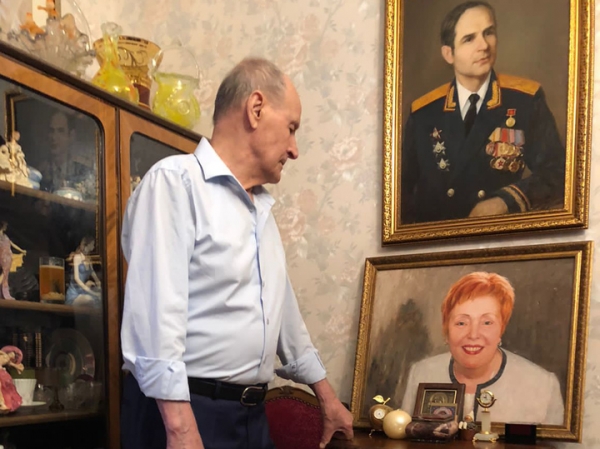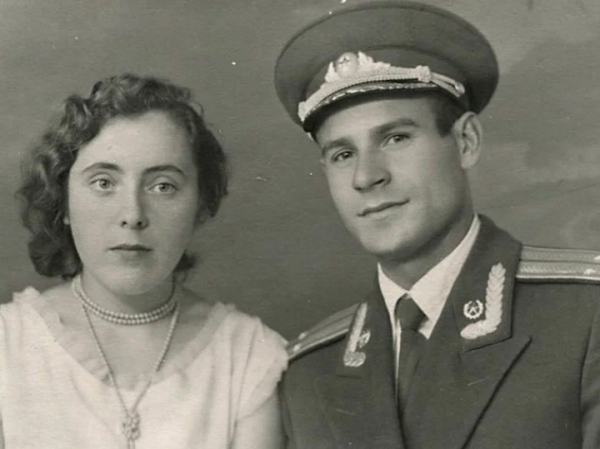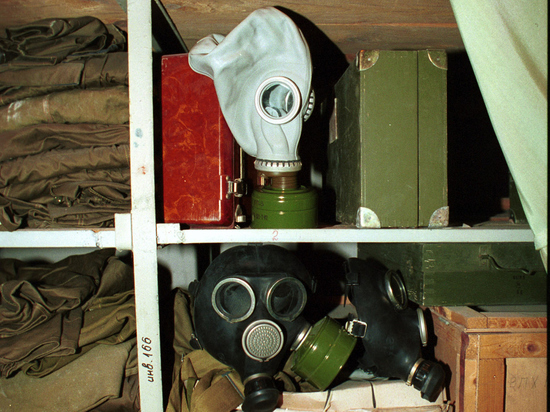The USSR should have kept 80% of the population
The world is seriously talking about the nuclear threat. What can we all expect in the near future? We heard his opinion with a unique specialist – Major General Nikolai Dmitrievich Tarakanov, one of the leaders of the liquidation of the consequences of the Chernobyl accident in 1986.

Photo: Artem Makeev
Nikolaj Tarakanov passed through Chernobyl. He led an operation to remove highly radioactive elements from particularly dangerous areas. The last of the military leaders of that time who is alive today.
On the territory of the Soviet Union, he built protective structures in case of nuclear war, he dealt with civil defense issues.
He was seriously irradiated. He survived. He lived to be 88 years old. A few years ago, he was nominated for the Nobel Peace Prize. He became the prototype of one of the heroes of the recent American series “Chernobyl”, declared the best feature film on this topic. He wrote 35 books of memoirs and reflections.
– Nuclear conflict has been taken very seriously since the atomic bombs were dropped on Hiroshima and Nagasaki in August 1945. No one doubts that these are not empty words and no bravery.
In 1961, the United States deployed medium-range missiles in Turkey that could easily hit the Soviet Union, including Moscow and major industrial centers. Therefore, in the same year, the country's leadership created the Committee for Civil Defense, headed by Marshal Chuikov. I started working under him. So the nuclear threat seemed very real in my youth.
 < /p>Nikolai Tarakanov today. One. Photo: From personal archive
< /p>Nikolai Tarakanov today. One. Photo: From personal archive
– Throughout our territory, protective structures and also command posts, from where control would be carried out, were being built at a very fast pace. And not only for the top management in Moscow, in cities with more than a million people, their own command posts were created. Communication, water, sewage, food supplies for three hundred days. Enterprises, especially defense ones, had their own anti-aircraft shelters. Their condition was regularly checked. And if something was wrong, the culprits were mercilessly punished. So the industry would survive and continue to function.
– It was estimated that up to 80% of the population could be saved. Not everyone had to stay in the big cities. Some would be evacuated outside the city, to former pioneer camps and recreation centers. Many potential flak shelters had a dual purpose. Let's say the subway. Or maybe there are garages for cars in my area, they can be converted. An hour is designated for the removal of the equipment. At the helm of every city is a person, even a group of people, who are responsible for making it all work like clockwork. In case of emergency, each mayor will combine his position with the function of the head of civil defense.
– I think that under Putin everything should be completely fine. Even under Shoigu, a special department of the Ministry of Emergency Situations was called to control and monitor this system throughout Russia.

Photo: Natalia Muschinkina
Of course, I have long since retired, but there are things that simply cannot be otherwise. That's what they taught us. At one time, I worked as a group leader for the construction of protective structures in the Saratov region, so I know what I'm talking about. Sometimes you drive down the streets of Moscow and you see some strange structures sticking out of the ground right in the middle of the road. These are deflectors – devices installed above the ventilation ducts of anti-aircraft shelters. To breathe.
“Washington, Nebraska, San Francisco”
– Bookmarks usually last for several days. Of course, the survivors will not run up immediately, they will wait for the radioactive fallout to settle. You must stay underground for about a week.
By the way, with the help of intelligence, in those years we obtained a map on which the Americans planted the points of possible nuclear strikes on the USSR. That means we knew their behavior pattern. How many times is it planned to hit Moscow, Leningrad, Voronezh, etc. Therefore, at the command staff exercises, they calculated in advance the potential losses of industry, agriculture, percentages of the destruction of cities and so on.
– About 60 percent. There were government decrees signed by Brezhnev and after Kosygin, according to which duplicate production facilities were also built ahead of time. Which will continue to operate under extraordinary circumstances. In the same Voronezh, where I come from, I personally went to the underground and checked them.
– The most important wartime products. There are dozens of such productions. As long as they are preserved. Of course, I don't know the current state of affairs in this area, but I don't think it was all left to chance.
– Of course it was. Washington DC, Nebraska, North Carolina, South Carolina, California, San Francisco… All their decision centers are also targeted.
– Yes, they have complete confusion and fiction in this matter. I repeat, serious protection existed only in the Soviet Union. In America, when I was treated there for radiation sickness after Chernobyl already in the Yeltsin era, I was very interested in the question of how they are doing with civil defense. Wherever I've been—Pennsylvania, Nebraska, California, and wherever I've wanted to see an air defense system. I didn't like her. If something happened, God forbid, of course, our survival rate should be much higher.
– They knew full well that we could be the first to launch a pre-emptive strike. We have it, it's included in the nuclear doctrine. Putin has repeatedly stated that under conditions of general readiness, we can be the first to strike. It was the same in the Soviet Union.
“The only thing to fear in nuclear power plants is sabotage”
– In 1986 we advised the guys , who were sent to the Chernobyl zone, precisely on the example of Zaporizhia. This station is six times larger than Chernobyl. And the only one in the world where there are six blocks. So you can imagine the scale of what can happen.
Chernobyl, and indeed all of humanity, was simply lucky that only the fourth power unit was damaged in 1986. Otherwise, we wouldn't be talking to you today, I repeated it more than once at lectures in America where I was invited.
I can only say that the protection of our nuclear power plants against possible external strikes was very strong. I don't think there is any danger of a direct hit either. All this is planned by the designers. The situation is more forced from the outside. Although, of course, there is no need to rattle the saber one more time and provoke. And you should only fear internal destruction due to possible sabotage.
– Ralph Ineson invited me to visit him three times later. She called. But I didn't go. Where – with all my diseases? Although relations between our states were still good at that time. So I didn't go only for health reasons.

Frame from the Chernobyl series. General Tarakanov played by Ralph Ineson
When the series came out, all the federal channels immediately rushed to me, the Americans asked for an interview. I was constantly asked, “Did you watch this movie alone?”
Why should I watch it? The whole of Chernobyl passed through my soul during the three months of the trip. By the way, when they say that there was no mobilization in Soviet times – there was, and it was in Chernobyl. In fact, it can be called “partial mobilization”. It affected over half a million people from all over the Soviet Union. The military registration and conscription offices were primarily concerned with sending people to be liquidated, they “removed” storekeepers, and conscriptions were delivered to homes. Everything was very clear and fast and no one was indignant or refused. For which they are very grateful. For saving the world.
“I can advise”
When we live most of our lives, it's not so scary to watch with tomorrow, how painful it is to remember the past.
Now Tarakanov has finished writing his 35th book. It is dedicated to his beloved wife Zoya, who died five years ago.

Together with his beloved wife in the 1980s Photo: From the personal archive
“My dear friend” – hundreds of letters from General Nikolai Tarakanov to his wife from his business trips in Chernobyl. He still keeps them all.
Zoya Ivanovna died less than a year before their 60th diamond wedding anniversary.
“As a general, a bearer of orders, I was assigned a place in the Troekur cemetery long ago. I had to leave first, of course. I am a man. We often went there with her, we chose the marble monument project. I'm going alone now, but there's room for two,” he sighs.
And shortly before his wife's death Photo: From personal archive
He shows me numerous portraits of his wife hanging on the wall in the living room. And a book of memoirs about her.
And I understand that, first of all, he defended this big world for the sake of the world of his loved ones – his wife, his daughter.
< p>“You wake up at night and all you think about is, God forbid, it happens again.” God forbid! The first time was absolutely terrible. Then he calmed down a little, yet the years pass, much is forgotten, softened. And here it is again.”
Recently, Tarakanov sent a telegram to Putin. By the way, he was his confidant in the very first election in 2000.
He wrote that he has decades of work in favor of the country's nuclear security. Intelligence and experience are never superfluous.
That a committee for the defense of the state should be formed and the most recognized experts in the field should be included in its composition. Many have already left, but there are those who still remain. Don't they remember the past?
“So are you ready to mobilize?” – I ask Tarakanov.
“There is no way to mobilize. Age is not the same. But I can advise.”
P.S. When the article was ready for publication, I called General Tarakanov to warn against its publication and found that he had been rushed to the hospital. It turned out badly.

